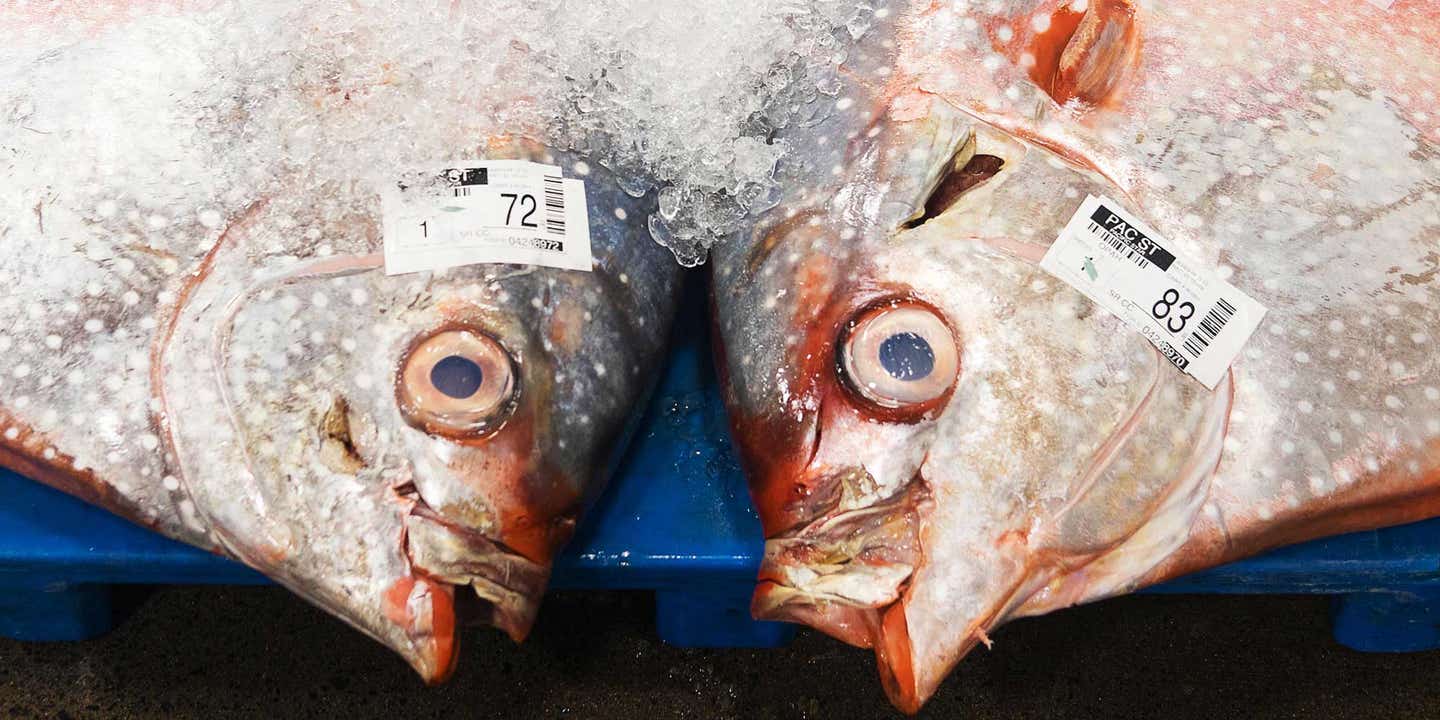
Why Honolulu’s Fish Auction Matters
America’s only fresh tuna auction ensures that local fishermen who prioritize sustainable fishery are getting paid their fair share
"Don't tell people to come here," says John Kaneko as he starts a tour of the Honolulu Fish Auction, well before dawn on a Saturday morning. It's not a show, he means, like what the Tsukiji market in Tokyo has become, nor is it a retail operation like Seattle's Pike Place Market. Rather, it's a barebones mechanism for quickly finding fair prices for the big-eye tuna, long-tail red snapper, mahi mahi, and ono that are unloaded from boats, many returning from three weeks of open-water fishing. For those with a passion for early mornings, chilly, unadorned rooms, and endless lines of pristine, freshly-caught fish, you should book a spot on the organized tour (the only way for the public to enter). For everyone else, sleep in and enjoy some locally-sourced poke later in the day. But do remember the auction: It's keeping America's sushi restaurants and poke-bandwagoners swimming in sustainable tuna—and ensuring the people who catch it are paid fairly.
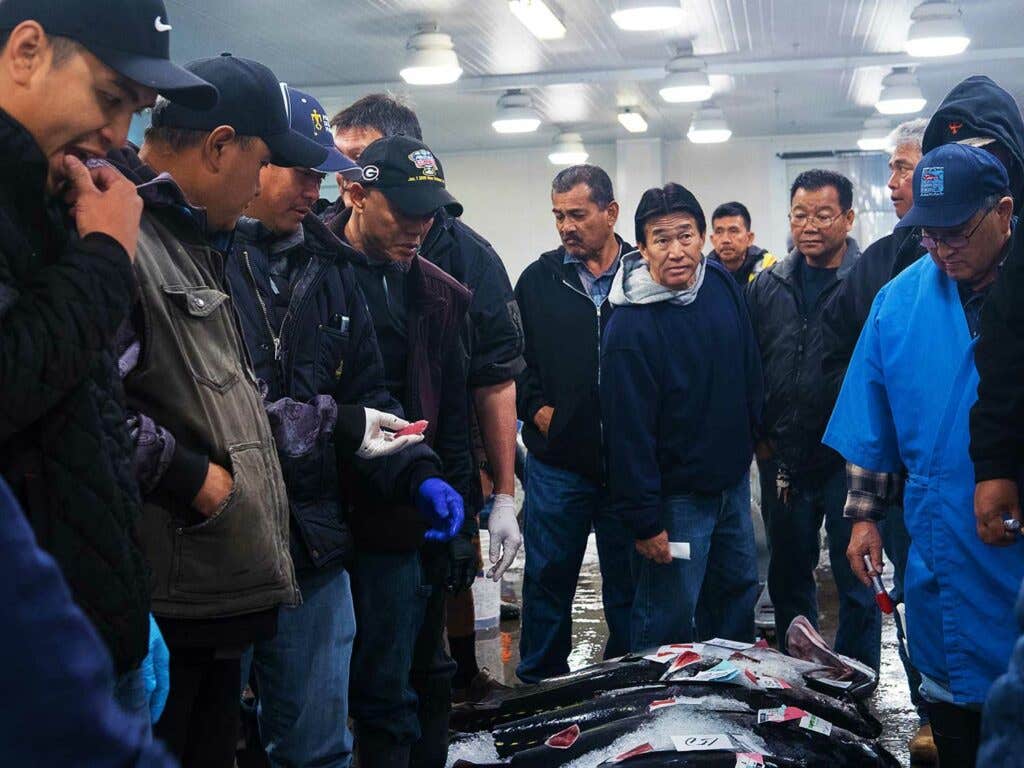
Around 6:30 a.m., the sun rises in Honolulu, a full hour after the auction began, and significantly after workers had arrived at the United Fishing Agency’s building on Pier 38. The fresh-fish display auction sprang up in the early 1900s, modeled after the Japanese system. Workers begin pulling the fish out of the boat holds at 1 o’clock in the morning, and bring them straight into the main auction area—a refrigerated, cement-floored room about three-quarters the size of a football field. Every fish gets tagged with a barcode specifying the boat name, species, and weight; then they’re all lined up by boat (in order of docking time), and species. A maze of plastic pallets topped with ice and swordfish, marlin, four kinds of tuna, sea bass, and others, snakes up and down the massive room. Each fish has a corner of the tail removed and flipped up so the buyers can see what the meat looks like. Most days about five boats come in. Saturdays are slow—today there are just two boats, totaling 26,000 pounds, but there can be up to 50 tons of fish on a busier day.
About 18% of the 28-35 million pounds of fish that move through the market each year head to the mainland (2% is exported abroad), and all of it is certifiably sustainable. This is an American fishery and the US's strict laws, combined with intensive monitoring by NOAA and the Coast Guard, and the Hawaii Seafood Council's management means that nothing sold here is on the Monterey Bay Aquarium Seafood Watch's red "Avoid" list, and most of it qualifies for the green "Best Choice" category. All the fish brought in meet a minimum safety and sustainability standard and are inspected for signs of mishandling or spoilage before the auction.
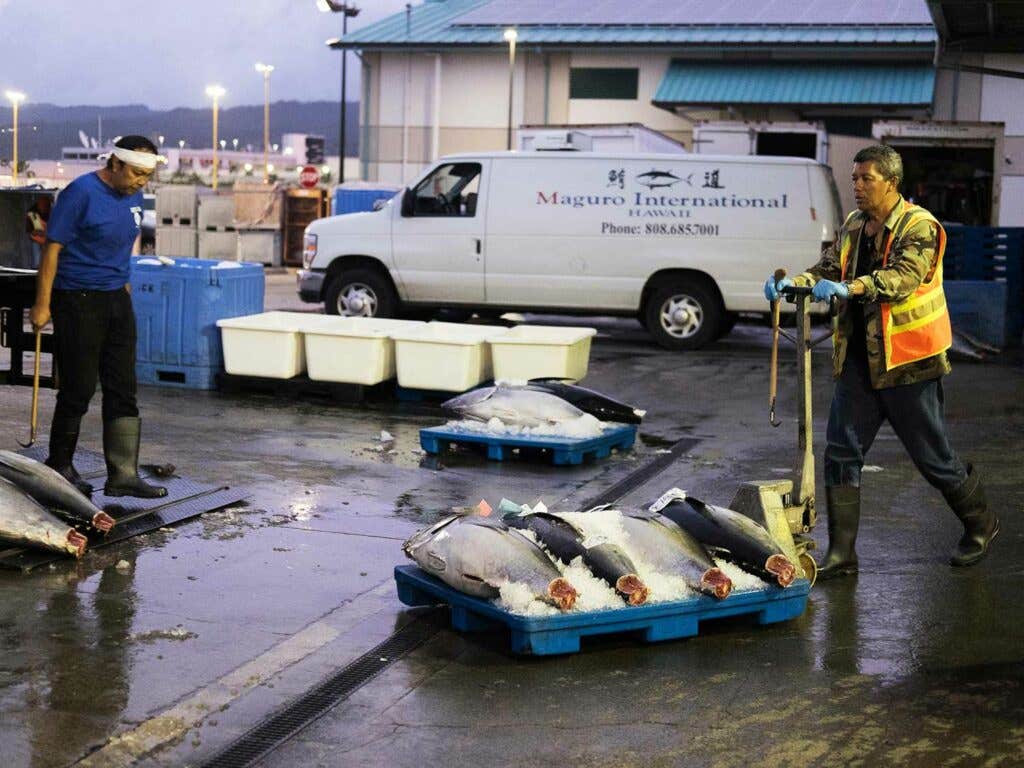
At one end of the refrigerated, warehouse-like room, the auctioneer begins by announcing the weight of a fish, then calling out prices, counting down in dime increments. Fish can go for anything from $0.10 a pound for cooking-grade fish, which must compete closely with the import market, to $22.40 a pound for highest quality sashimi grade American-caught bigeye and yellowfin tuna. A huddle of more than a dozen buyers follow the auctioneer around, each judging the bright, white meat of ono, rich oil content of the opah, or the intense red color of tuna. The actual auctioning lasts only a few seconds: Most buyers know what they’re looking for and what they’ll pay. But the prices aren’t set in stone. If someone gets a call from a customer to “buy, buy, buy” on yellowfin, the auction can suddenly take a competitive turn. When the price is determined, an assistant drops a note with the price onto the fish, and the auctioneer leads the posse onto the next one, the small crowd shuffling down the snaking line of shimmering carcasses.
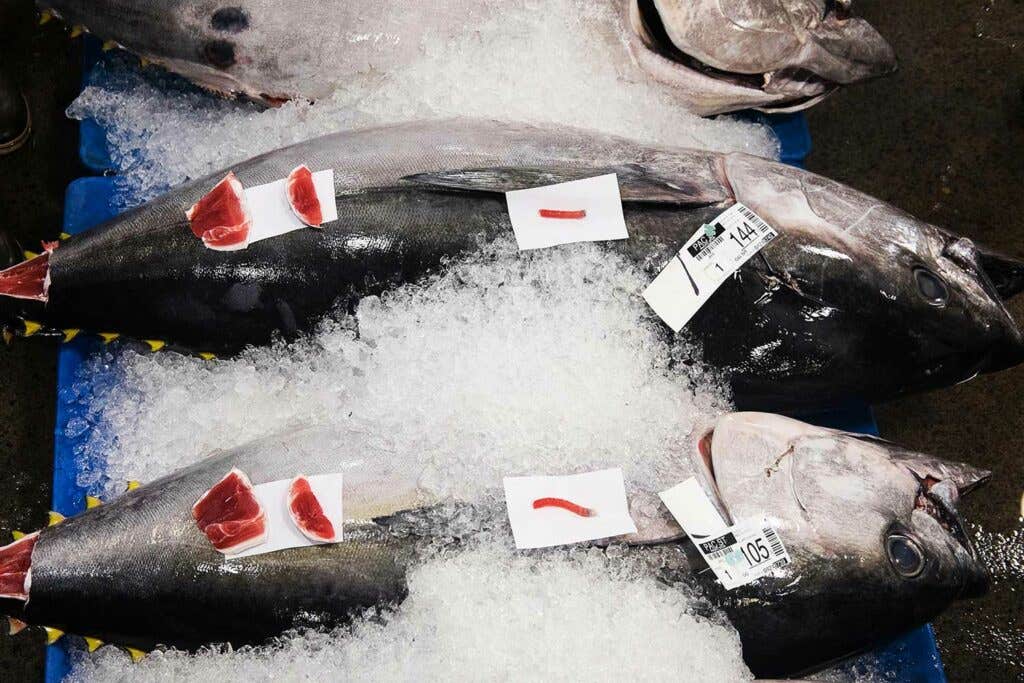
Most of the buyers are wholesalers; only two of them are retailers on Oahu. Fish bought on a Saturday morning could show up on a New York City sushi bar as soon as Tuesday. For good, whole tuna selling at $11.90 per pound here at the market, the price of a cut fillet works out to $24 a pound by the time it gets its plane ticket and lands at a vendor. To turn even a marginal profit, a sushi restaurant then needs to sell it at $10 for a single bite. But, for today's market, that fish is the best of the lot, the shimmering jewel-toned tuna, clear and un-clouded, the entire fish firm and intact. The cheaper fish has ragged spots and browning from degrading. Still entirely safe to eat, it's nothing that a little sriracha, mayo, and a rebranding as "spicy poke" can't fix.
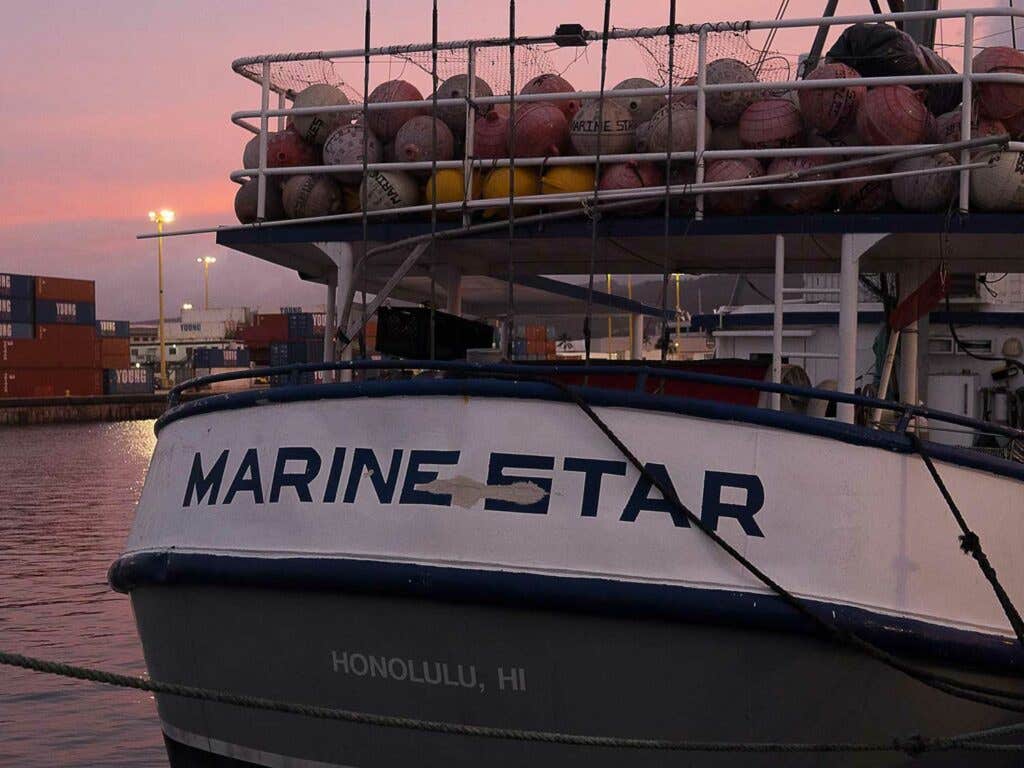
That the better fish fetches a significantly higher price is the premise of the auction, but also a safeguard that ensures fishermen receive a fair price for their goods, as well as balancing supply and demand. While other fisheries use techniques like ultra-freezing (as in 80% of Japanese fish), the boats here don’t have that equipment. Instead, the fishermen load up their small boats with ice and head out into the open ocean. It takes the boats about three days to reach the waters where this kind of fishing is permitted, and they can fish for up to 17 days before making the three-day-long trip back to the auction. That means the oldest fish at auction might have been sitting on ice for 20 days, while the freshest might have just four. A practiced fisherman knows when to head back to keep his fish freshest. A practiced buyer can identify the freshest catch even in the rapid-fire buying environment.
By the time the sun comes up over the roof of the market, men are wheeling pallets of fish onto trucks parked outside. The fishermen will get paid, in cash, that afternoon, letting them make a quick turnaround and head back out to sea. It'll still be a few days before the fish makes it to mainland restaurants and stores, but here in Honolulu, restaurants like Nico's (next door to the fish market) and markets like Tamashiro can have their fish ready to go later that day.
More importantly, the high-quality, sustainably caught tuna will have sold for the best possible price; the fishermen who prioritize quality over quantity, who played by the rules governing sustainability, will reap the rewards. The fish auction prevents a race to the bottom—for the fish coming in from Hawaii—and serves as an example to other fisheries about how to make a fishery sustainable for both the humans and fish involved. Plus it turns out some darn good sashimi.
Keep Reading
Continue to Next Story










